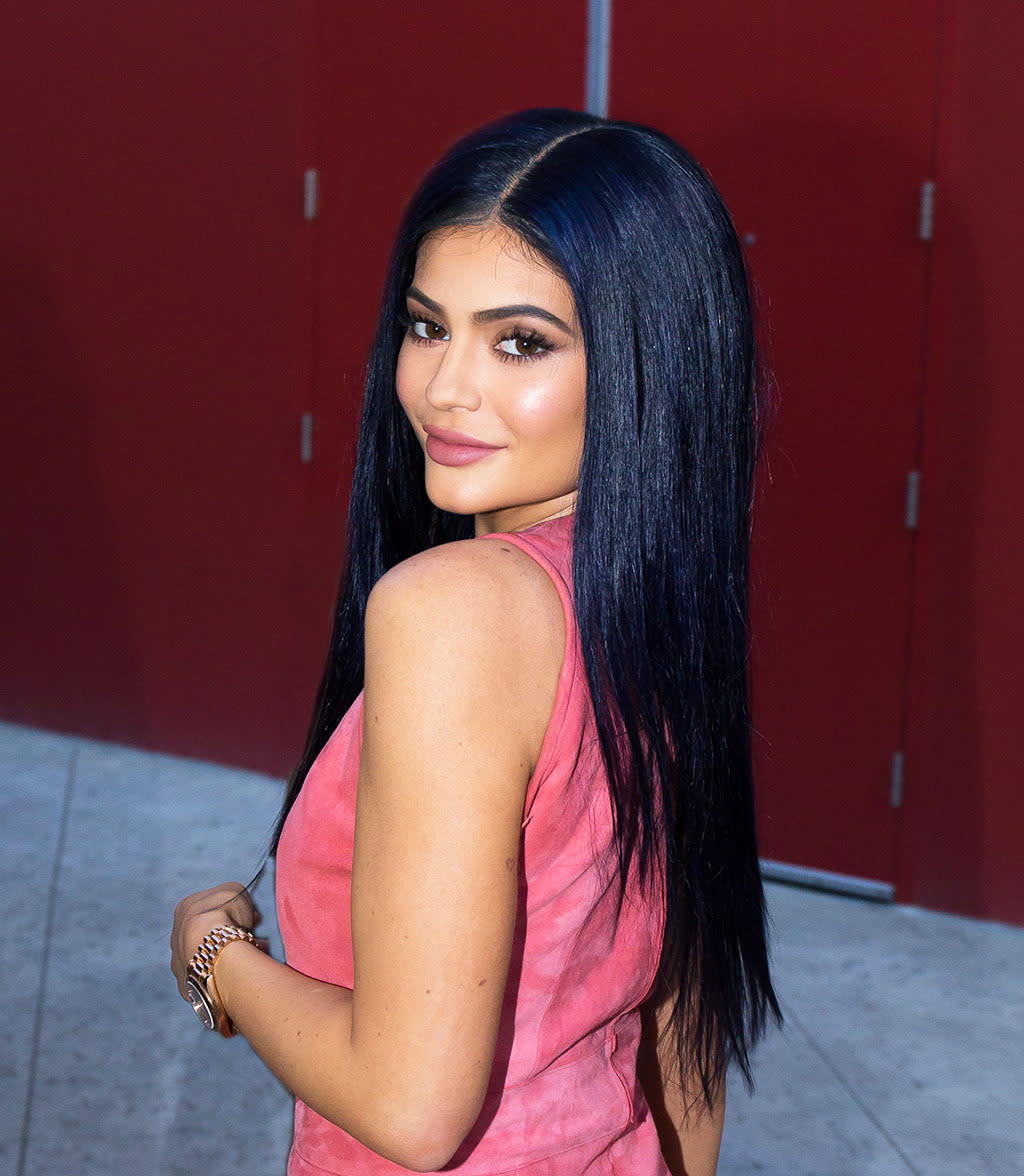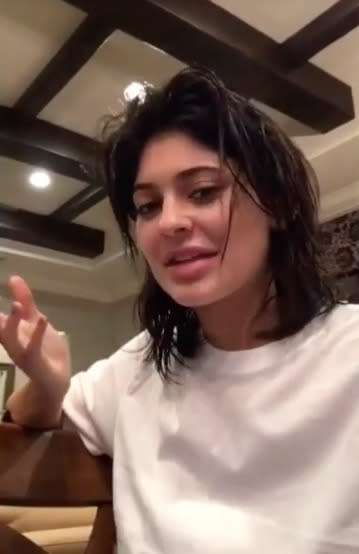How to Bleach Your Hair Without Destroying It (Like Kylie Jenner Did)

This cool-girl look comes with a price, according to Kylie. (Photo: Splash News)
Over the weekend, Kylie Jenner released a Snapchat of her real hair, damaged from bleaching. The shoulder-grazing hair looked nothing like the long locks we’re used to seeing on Kylie. Instead her hair was broken around the crown, showing the kind of destruction that constant color change can cause.
It is possible to avoid this level of damage, if you’re careful about how you bleach your hair and do maintenance after coloring. Joel Warren, master colorist and co-founder of Warren-Tricomi Salons, gave us a list of steps for bleaching your hair, along with his insights on making it through the long and arduous process of coloring your hair.

Kylie admitted she’s not happy about the damage she’s done to her hair. (Photo: Kylie Jenner Snapchat)
1. See your stylist for a consultation
No, you cannot do this at home! “This process should only be done by professionals,” Warren says. “This is not something you should do at home, unless your hair is less than an inch long. Then, when you bleach out your hair, if it breaks you won’t care and can cut it off.
2. Evaluate your existing hair
Is your hair fine or coarse? Do you have existing hair color that needs to be dealt with? How long is your hair? If it’s longer than shoulder length, are you willing to cut it? These are the questions you need to go over with your stylist before you dye a single strand.
Warren explains that your stylist is “evaluating all these different aspects of your hair to figure out if it’s possible to bleach out your hair without it breaking.” Existing hair color means your stylist is dealing with two different kinds of hair that need to be treated so they don’t bleach at different rates, and long hair is not easily able to withstand the stress that a treatment like bleaching puts on it.
Related: How ‘Natural’ Hair Got This Woman Fired
Caveat: If at this point you’re having misgivings about whether dying your hair is right for you, Warren recommends considering highlights instead. It’s a less intense process, he says, and will give you time to work up to bleaching while you get comfortable with your stylist, if you choose to go all the way. It will also give you a preview of how you will look with lighter hair without the patience required for bleaching.
3. Mix up the bleach
This is where the long process begins and where you should realize that you really want to be working with a professional with an eye for mixing chemicals to apply to your hair. “What’s happening during this process is that, in order to remove color, you have to open up the cuticle of the hair,” Warren explains. The longer the bleach stays on, the more it opens and the more likely you are to have breakage if the bleaching process is not done properly.
Warren recommends using a bleach product with additives to soften the process if you’re going blonde, like L’Oreal Professional Studio (Warren is a brand ambassador), or with a color additive if you’re bleaching and plan to add a color on top, like B3 Brazilian Bond Builder. “Using products like these ensures you are taking every step possible to avoid breakage,” Warren says.
This process can be time-consuming, Warren explains, because some colorists may apply bleach to the ends first, wash it out, and then apply to the roots. The heat from your scalp can activate the bleach, causing a different reaction than the ends of your hair may get. “It can’t be rushed, and you must have a lot of patience,” Warren says. “Be prepared for many trips to the sink and many applications!”
4. Pick your shade and apply toner or color
Once the bleach has processed and has been washed out, you have to pick the shade you want to be. Your stylist will apply toner, which Warren explains “gets deposited in the cuticle of the hair to make it look paler or warmer, depending on your preference.”
Related: Gigi Hadid and Kendall Jenner Swap Hair for Balmain
5. You have your new look — now you’ve got to take care of it
Warren advises his clients to use shampoos and conditioners made for highly stressed hair after bleaching. He recommends leave-in conditioner treatments to help protect your new ’do also.
“The one thing about hair that people don’t realize is it’s not like skin. Once you do something to it, it can’t and won’t heal,” Warren says. The best you can do is manage the condition your newly bleached hair is in after you’ve removed all the color. If you want to return to your original color, Warren says you can, but you should know the texture and condition of your hair will be compromised, unless you cut it all off and let new hair grow in.
Warren recommends not trying to keep up with the Kardashians, specifically Kim and Kylie, in terms of constant hair color changes. While we now know for sure that Kylie has damaged her hair with her various bleaching adventures, Warren says he’s not entirely convinced Kim’s blonde hair isn’t just a series of wigs. “It seems really incredible for her to be able to do dark and light and still keep the length of their hair. It seems almost impossible to me,” Warren says.
Let’s keep in touch! Follow Yahoo Beauty on Facebook, Twitter, Instagram, and Pinterest.

